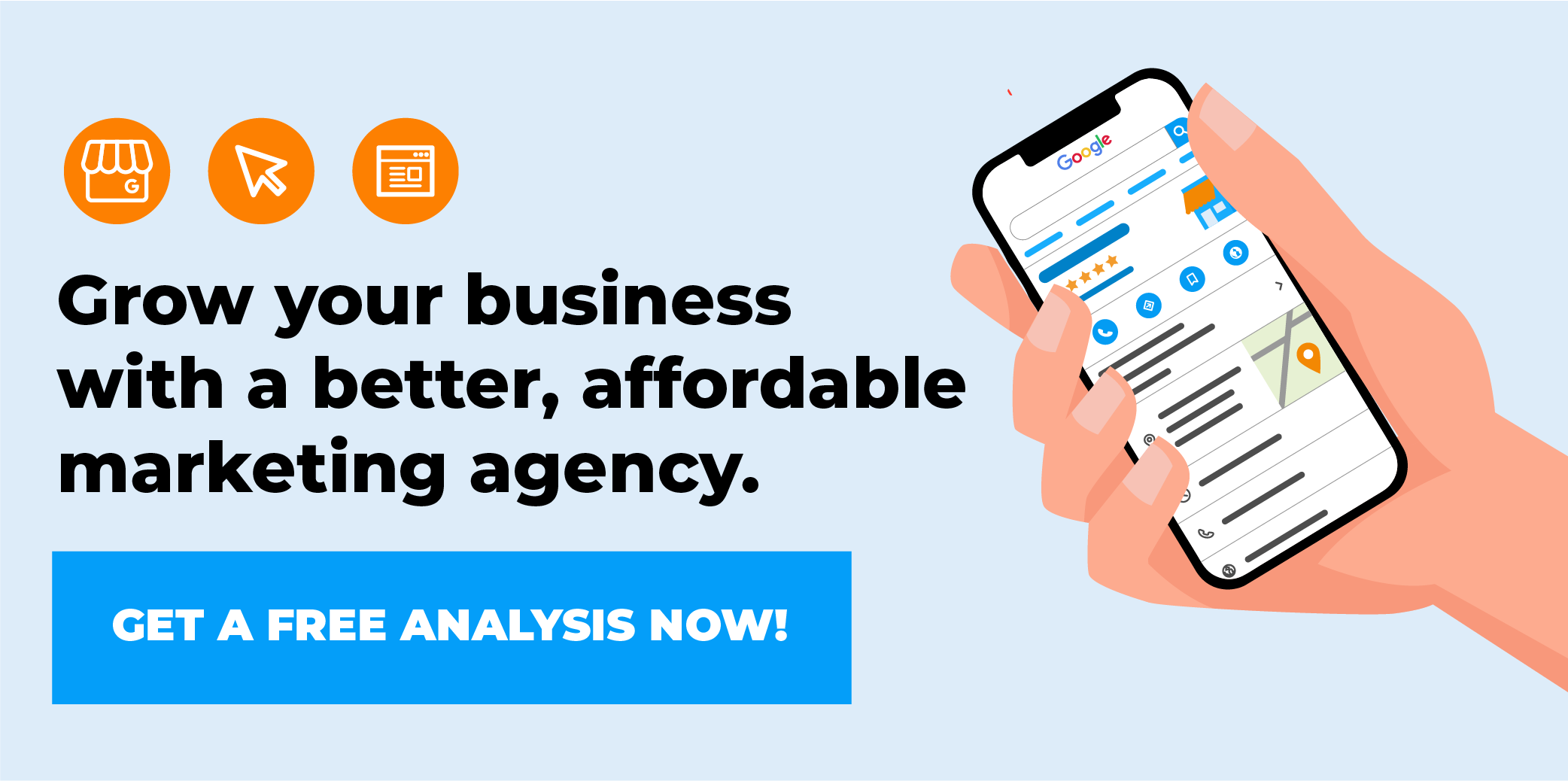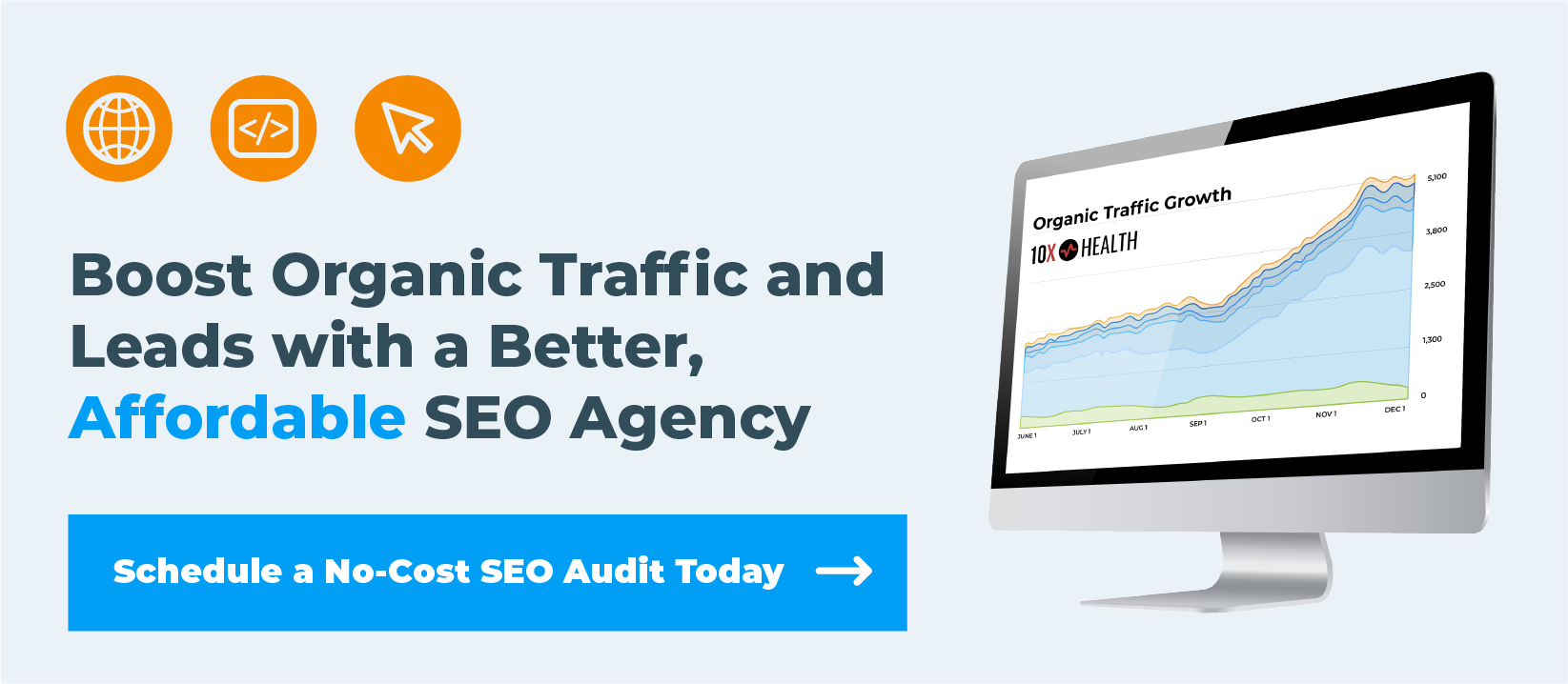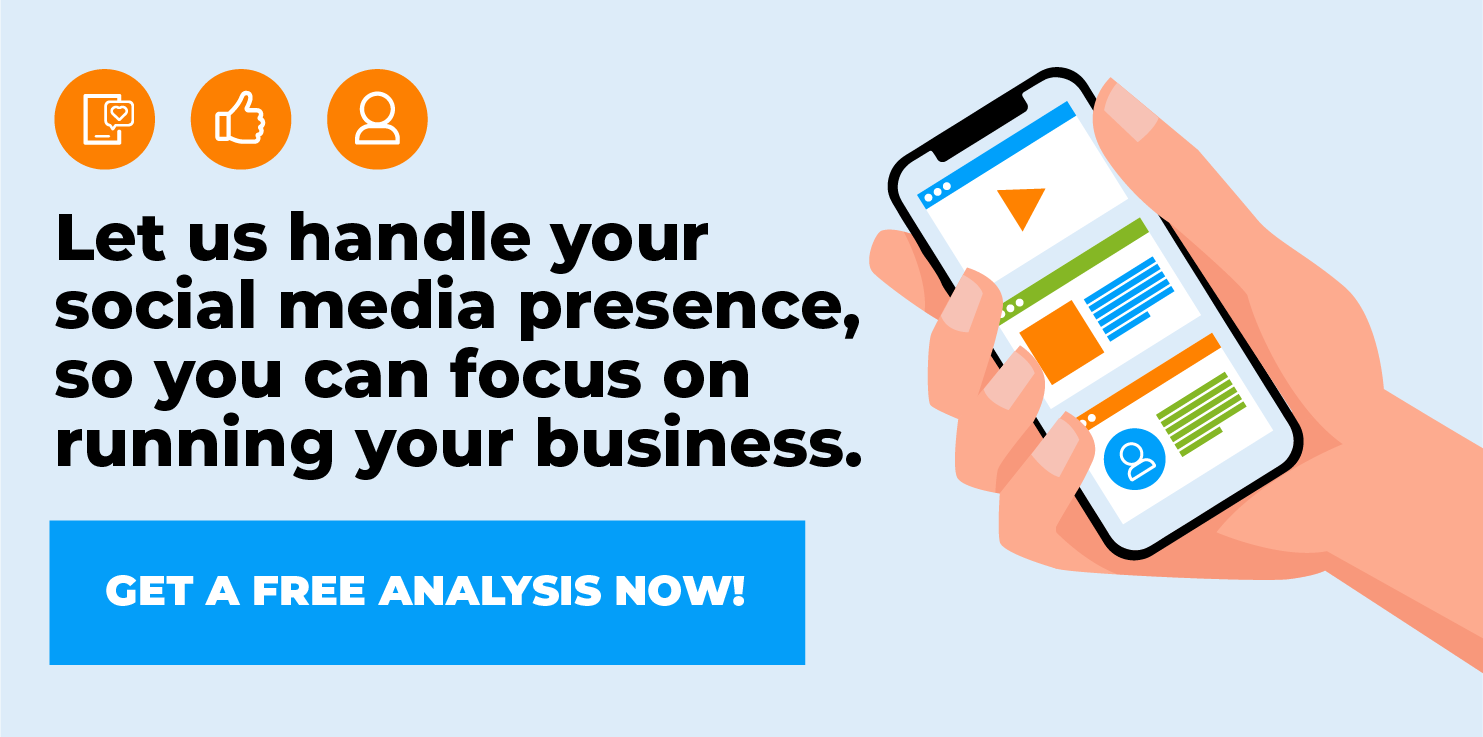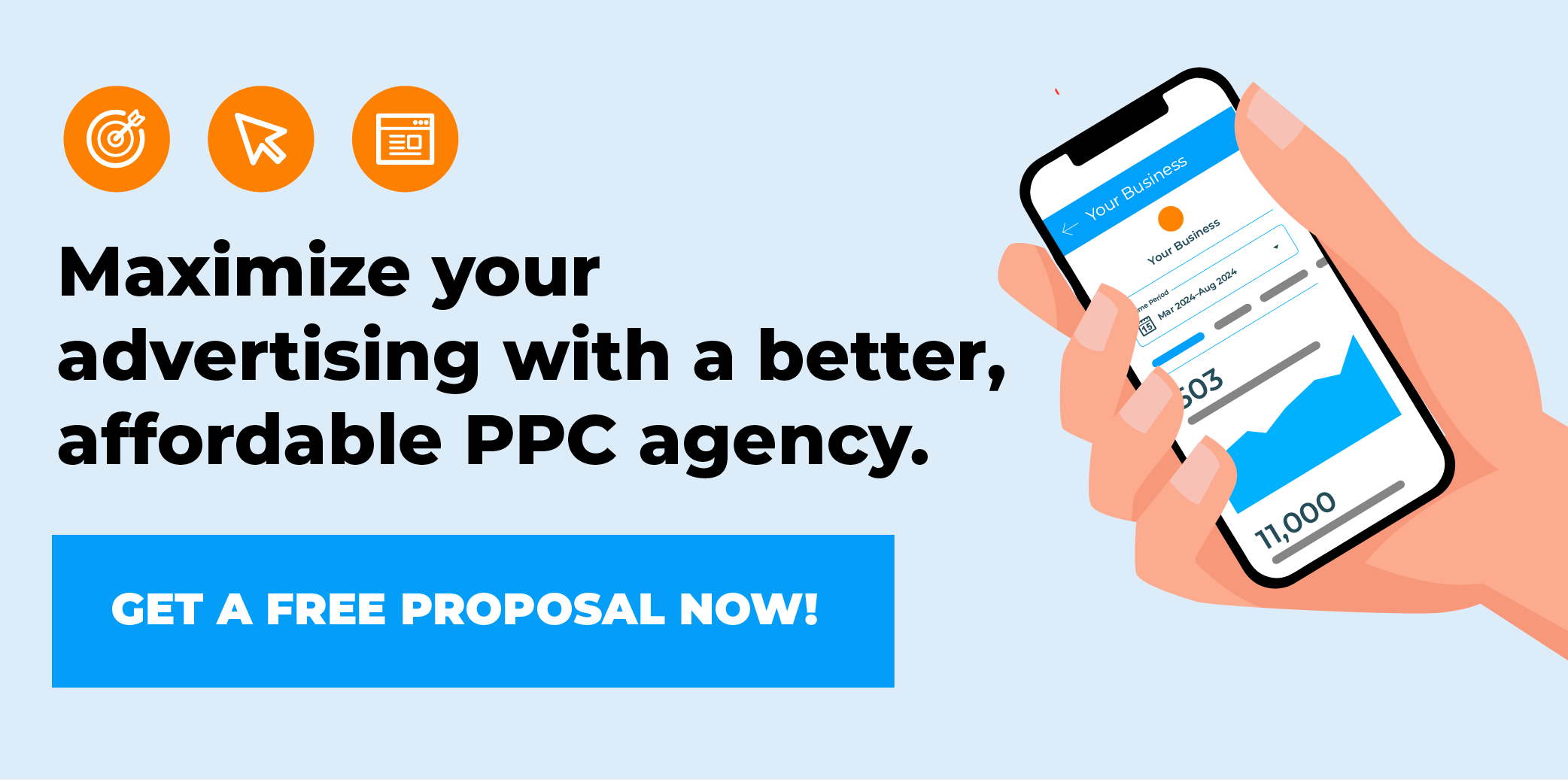Digital marketing for small business can be a significant growth catalyst. It offers the methods that can transform your company from a local secret to a widely recognized name. However, the digital marketing landscape can sometimes feel complex to new business owners.
There’s no need for concern. This guide is here to explain the essentials of digital marketing for small businesses. We will explore various topics, from social media marketing to search engine optimization, and other important aspects of a strong marketing strategy.
Are you prepared to give your business the digital advancement it needs? Let’s begin exploring these effective digital marketing tactics.
Table Of Contents:
- 1. Build a Killer Website
- 2. Master the Art of SEO
- 3. Harness the Power of Social Media
- 4. Email Marketing: Your Secret Weapon
- 5. Pay-Per-Click Advertising: Get Instant Visibility
- 6. Content Marketing: Become the Go-To Expert
- 7. Local SEO: Dominate Your Neighborhood
- 8. Leverage Online Reviews
- 9. Analyze and Adjust
- 10. Stay Up-to-Date
- Conclusion
- Why Work with BizIQ?
- FAQs
1. Build a Killer Website
Your website often serves as your primary digital storefront. It is frequently the first interaction potential customers have with your business, so it needs to make a positive impact. A well-crafted online presence is foundational for any small business digital marketing effort.
A strong website should be intuitive to use, fully responsive on mobile devices, and clearly showcase your products or services. Consider it your round-the-clock salesperson, ready to answer queries, emphasize your unique selling points, and facilitate contact or purchases. Effective web design can significantly help you generate leads and drive traffic to your offerings.
Remember, simplicity and professionalism often win; you don’t need excessive features. A clean, professional design that loads quickly is highly effective and can help you save money on development costs.
User Experience (UX) and Navigation
A positive user experience is vital for keeping visitors on your site and guiding them through the buying process. Navigation should be logical and straightforward, allowing users to find what they need with minimal clicks. Make sure your contact information is easy to locate, promoting better customer service.
Think about the journey a customer takes on your site. Are there clear calls-to-action (CTAs) on important pages? These CTAs tell users what to do next, whether it’s “Buy Now,” “Learn More,” or “Contact Us.”
Mobile-Friendliness and Speed
With a majority of users accessing the internet via mobile devices, a mobile-friendly website is non-negotiable. Your site should adapt seamlessly to various screen sizes, offering a consistent experience across desktops, tablets, and smartphones. Google also prioritizes mobile-friendly sites, which can affect how you rank higher in search results.
Website speed is another critical factor. Slow-loading pages lead to high bounce rates and frustrated users. Optimize images, leverage browser caching, and choose a reliable hosting provider to improve your site’s performance and provide quick access to information.
2. Master the Art of SEO
SEO, or Search Engine Optimization, helps your website become more visible when people use a search engine to look for businesses like yours. It’s a fundamental part of digital marketing for small business success. Good engine optimization ensures that potential customers can find you easily.
Begin by researching target keywords relevant to your business and local area. These are the terms and phrases people type into search engines when seeking products or services you offer. Then, integrate these keywords naturally throughout your website’s content, titles, and descriptions.
However, SEO involves more than just keywords; it’s also about creating high-quality, valuable, and relevant content that directly addresses your customers’ questions and needs. The more helpful and informative your content, the more likely search engines are to feature it prominently. This approach to search engine optimization can significantly boost your online presence.
On-Page and Off-Page SEO
On-page SEO refers to optimizing elements directly on your website. This includes optimizing title tags, meta descriptions, header tags, and image alt text with your target keywords. Internal linking, connecting pages within your own site, also helps search engines understand your content structure.
Off-page SEO primarily involves building high-quality backlinks from other reputable websites to yours. These backlinks act as votes of confidence, signaling to search engines that your site is trustworthy and authoritative. Guest blogging, industry partnerships, and creating shareable content are ways to earn these links.
Technical SEO
Technical SEO focuses on improving your website’s infrastructure to help search engine crawlers effectively index your site. This includes having a secure site (HTTPS), an XML sitemap, and a well-structured URL system. Ensuring your website is free of broken links and crawl errors is also part of technical SEO.
Regularly auditing your site’s technical health can identify issues that might hinder your search engine performance. Many digital marketing tool options can help with these audits.
3. Harness the Power of Social Media
Social media marketing offers a dynamic space to interact with your customers, showcase your brand’s personality, and cultivate relationships. It’s one of the most popular digital platforms for businesses to reach people. Choosing the right social media platforms is essential for your marketing strategy.
Select the media platforms where your target audience spends their time. For instance, if your business is B2B, LinkedIn might be the most effective channel. If you’re aiming to connect with younger consumers, platforms like Instagram, TikTok, or even YouTube Shorts could be more suitable.
Post engaging content regularly, interact with your followers by responding to comments and messages, and share information that provides value. Remember, social media isn’t solely for direct selling; it’s about building a community. Share helpful tips, behind-the-scenes content, or interesting facts related to your industry to keep your active users engaged and encourage sharing content.
Building a Community
Focus on fostering a community around your brand on each social platform. Encourage discussions, ask questions, and run polls to boost engagement. User-generated content, where customers share their experiences with your product or service, can be a powerful tool for building trust and authenticity.
Responding promptly and helpfully to comments and messages also improves customer service perceptions. When customers reach out, a quick and positive interaction can make a big difference.
Influencer Marketing Potential
Consider exploring influencer marketing, where you collaborate with individuals who have a significant and engaged following within your niche. An influencer can introduce your brand to a wider audience, building credibility and driving traffic. This can be a great channel for businesses looking to expand their reach.
When selecting influencers, focus on relevance and engagement rates rather than just follower count. Authentic partnerships often yield the best results for your marketing campaigns.
4. Email Marketing: Your Secret Weapon
Email marketing, though seemingly traditional, remains one of the most effective digital marketing tools available. It provides a direct communication line to your customers’ inboxes, allowing you to nurture leads and build customer loyalty. Many businesses find that email marketing offers a strong return on investment.
Build your email list by offering something of value in exchange for an email address. This incentive could be a discount, a free e-book or guide, exclusive content, or early access to sales. Make sure your signup process is straightforward and clearly communicates the benefits of subscribing.
Once you have a list, send out regular newsletters that include helpful content, product news, special offers, and company updates. However, it’s important to find the right frequency and avoid overwhelming your subscribers’ inboxes. Respecting their preferences is key to long-term success with email marketing.
Segmentation and Personalization
To make your email marketing more effective, segment your list based on demographics, purchase history, or engagement levels. This allows you to send more targeted and relevant messages to different groups of subscribers. Personalization, such as using the subscriber’s name, can also increase open and click-through rates.
Automated email sequences, like welcome series for new subscribers or cart abandonment reminders, can help nurture leads through the buying process. A well-structured loyalty program can also be promoted effectively through email, encouraging repeat business.
5. Pay-Per-Click Advertising: Get Instant Visibility
Pay-Per-Click (PPC) advertising allows your business to gain prominent visibility in search results and on other websites quickly. It’s a method where you pay a fee each time one of your ads is clicked. Effective PPC marketing campaigns can drive significant traffic and generate leads.
Google Ads is the most widely used PPC platform. It enables you to create ads that appear when users search for specific keywords related to your business or browse websites within the Google Display Network. The primary advantage is that you only incur costs when someone actively clicks on your ad, making it a measurable marketing tactic.
Begin with a modest marketing budget, experiment with different ad copy variations and targeting options, and carefully monitor campaigns. Gradually increase your spend as you identify what strategies yield the best results. Using a credit card for managing ad spend is a common practice.
Keyword Bidding and Ad Copy
PPC involves bidding on keywords you want your ads to show up for. Effective keyword research is crucial to ensure your ads are shown to the right audience. Your ad copy needs to be compelling and relevant to the search query, encouraging users to click.
Landing page optimization is also vital. The page users land on after clicking your ad should align with the ad’s message and provide a clear path to conversion. Testing different versions of ads and landing pages can help improve performance.
6. Content Marketing: Become the Go-To Expert
Content marketing centers on creating and distributing valuable, relevant, and consistent content to attract and retain a clearly defined target audience. Ultimately, it aims to drive profitable customer action. Becoming a trusted resource in your industry can significantly boost your business’s credibility.
Start a blog post series on your website where you share your industry expertise, answer common customer questions, or offer insights on industry news and trends. How-to guides, checklists, and detailed articles can establish your authority. Consider resources like Content Moz for inspiration on content ideas and SEO best practices.
Don’t restrict your content marketing efforts to written text. Engaging video content, informative infographics, and insightful podcasts can all be powerful components of your strategy. Diversifying your content formats helps you reach people with different preferences and effectively utilize various digital platforms for sharing content.
Video Marketing and Visuals
Video marketing is increasingly popular and effective. You can create product demonstrations, customer testimonials, behind-the-scenes looks, or educational videos. Platforms like YouTube, including YouTube Shorts for shorter content, are great channels for distributing video content.
Infographics are excellent for presenting data and complex information in an easily digestible visual format. High-quality images and well-designed visuals should accompany all your content to make it more appealing and shareable.
7. Local SEO: Dominate Your Neighborhood
If your small business has a physical location or serves a specific geographic area, local SEO is incredibly important. It helps your business appear in local search results, like Google Maps, when people are looking for businesses like yours nearby. Strong local SEO can drive significant foot traffic and local online orders.
Claim and optimize your Google Business Profile (formerly Google My Business). Keep this business profile updated with accurate hours, your address, phone number, photos, and service descriptions. Encourage satisfied customers to leave reviews on your profile, as these heavily influence local rankings and customer decisions.
Use location-specific keywords throughout your website content and in your online directory listings. For instance, if you run a bakery in Austin, phrases like “best cupcakes Austin” or “Austin bakery near me” are important target keywords for local searches. Consistency in your Name, Address, and Phone number (NAP) across all online mentions is crucial for local SEO.
Managing Your Google Business Profile
Your Google Business Profile is a great tool for interacting with local customers. Use Google Posts to share updates, offers, and events. Answer questions asked on your profile promptly to provide quick and helpful customer service.
Regularly uploading new photos of your business, products, or team can also enhance your listing. Ensuring your listing is complete and active signals to Google that your business is operational and engaged.
8. Leverage Online Reviews
Online reviews function as digital word-of-mouth referrals. They significantly impact your online reputation and can influence potential customers’ decisions. Positive reviews build trust and credibility for your small business.
Actively encourage satisfied customers to leave reviews on important platforms like Google, Yelp, Facebook, or industry-specific review sites. Respond to all reviews, both positive and negative, in a professional, courteous, and constructive manner. Addressing negative feedback shows you value customer service and are committed to improvement.
Showcase positive reviews and testimonials on your website and in your marketing materials. This form of user-generated content is highly persuasive and can build customer loyalty. Establishing a simple process for customers to leave feedback can make it easier to gather these valuable assets.
Building Trust Through Transparency
When you respond to reviews, you demonstrate transparency and a commitment to your customers. A thoughtful response to a negative review can sometimes turn a dissatisfied customer into a loyal one. It also shows prospective customers that you take feedback seriously.
Consider implementing a simple loyalty program that rewards repeat customers, who are often more likely to leave positive reviews. This not only encourages reviews but also boosts overall customer retention.
9. Analyze and Adjust
A significant advantage of digital marketing is the ability to track and measure nearly every aspect of your efforts. Utilize analytics tools, such as Google Analytics, to monitor your website’s performance and understand user behavior. This data is invaluable for refining your small business digital marketing strategy.
Examine key metrics like website traffic sources, bounce rate, conversion rates, and time on page. Identify which content and marketing channels are performing well and which ones are not meeting expectations. Many marketing tools can help you gather and interpret this data in real time.
Use these insights to continually refine your digital marketing tactics. Double down on what’s working effectively, and be prepared to experiment with new approaches for underperforming areas. AI tools are also emerging to help with data analysis and campaign optimization, making it easier to monitor campaigns.
Key Performance Indicators (KPIs)
Define clear KPIs for your marketing campaigns. These could include metrics like cost per lead, customer acquisition cost, or return on ad spend. Tracking these KPIs will help you understand the financial impact of your marketing budget allocations.
Regularly review your analytics, perhaps weekly or monthly, to spot trends and make informed decisions. This ongoing process of analysis and adjustment is key to improving your marketing capabilities over time.
10. Stay Up-to-Date
The landscape of digital marketing changes rapidly. Strategies and platforms that are effective today might become less so tomorrow due to algorithm updates, new technologies, or shifting consumer behavior. Staying informed about current trends and best practices is vital for sustained success.
Follow reputable digital marketing blogs, subscribe to industry newsletters, attend webinars, or consider enrolling in online courses to keep your knowledge and skills current. The more you understand about new digital marketing tactics and the evolving marketing capabilities of various tools, the better equipped you’ll be to market your business effectively. Some find it’s easy to fall behind if they don’t actively seek new information.
Experiment with new features on social media platforms or explore emerging AI tools that can help automate tasks or provide deeper insights. Being adaptable and willing to learn will ensure your effective digital marketing efforts continue to yield results and help your business small or large thrive in the competitive Google online space.
Conclusion
Effective digital marketing for small business does not need to be an intimidating endeavor. Start by focusing on the fundamental strategies, prioritize providing genuine value to your customers, and do not hesitate to experiment with different approaches. Remember that a consistent and well-thought-out marketing strategy is crucial for any business digital marketing success.
Consistency in your efforts is a major factor for seeing positive outcomes; customers reach out when they see persistent and reliable engagement. Continue to apply these principles, and you will begin to observe tangible results as you attract potential customers. Your small business has the potential to make a substantial impact in the digital world, and this article covers some great ways to start.
Now, take these insights and show the market what your unique small business has to offer. With the right digital marketing tactics, you can achieve remarkable growth and build lasting customer loyalty.
Why Work with BizIQ?
Digital marketing is essential—but it doesn’t have to be overwhelming. Small businesses today face a fast-changing landscape filled with buzzwords, platforms, and strategies that can feel intimidating or unclear. That’s where BizIQ steps in.
BizIQ specializes in simplifying digital marketing for small business owners, transforming local brands into recognizable names online. We take the guesswork out of things like SEO, website design, social media, email marketing, paid ads, and reputation management—so you can focus on running your business while we handle the strategy and execution.
Unlike DIY tools or one-size-fits-all platforms, BizIQ offers:
-
Custom strategies tailored to your goals and audience
-
Expert help managing your Google Business Profile
-
Local SEO services to drive more neighborhood traffic
-
Email and content marketing that actually converts
-
Clear reporting and ongoing optimization based on real data
If you’re ready to stop dabbling and start growing, BizIQ is your trusted partner in building a powerful digital presence that gets results—without wasting your time or budget.
Let us help you turn clicks into customers, and confusion into clarity.Get Your Free Custom Marketing Proposal Today
Smart, Growth, Marketing.
FAQs
What is the 3-3-3 rule in marketing?
The 3-3-3 rule in marketing refers to a strategic guideline used by marketers to capture and retain consumer attention effectively. It suggests that within the first three seconds, an advertisement should grab attention; within the next three minutes, it should engage interest with compelling content; and finally, it aims to create a memorable impression that lasts at least three days, enhancing brand recall.
Is digital marketing worth it for small businesses?
Yes, digital marketing is highly beneficial for small businesses. It offers cost-effective solutions compared to traditional advertising methods and provides measurable results. Digital platforms enable targeted campaigns that reach specific audiences, enhancing the efficiency of marketing efforts.
Moreover, the vast array of tools available allows businesses to engage with customers in real-time, build brand loyalty, and increase visibility. Thus, leveraging digital marketing strategies can significantly contribute to a small business’s growth and competitiveness in the market.
What are the 7 C’s of digital marketing?
- Customer – Know your audience. Every digital marketing effort should begin with a deep understanding of who your customers are, what they need, and how they behave online.
-
Content – Provide value. High-quality, relevant, and engaging content is the foundation of attracting, educating, and converting your audience.
-
Context – Deliver the right message at the right time. Tailor your marketing based on where customers are in their buying journey and on which platforms they’re active.
-
Community – Build relationships. Engaging with your audience through social media, email, and online reviews fosters trust and loyalty.
-
Convenience – Make interactions easy. From website navigation to mobile optimization, ensure your digital presence is seamless and user-friendly.
-
Conversion – Turn visitors into customers. Every marketing effort should include a clear path to conversion, whether it’s filling out a form, making a purchase, or calling your business.
-
Consistency – Maintain a unified brand. Whether it’s your tone, visuals, or messaging, consistency across channels builds recognition and reliability.






